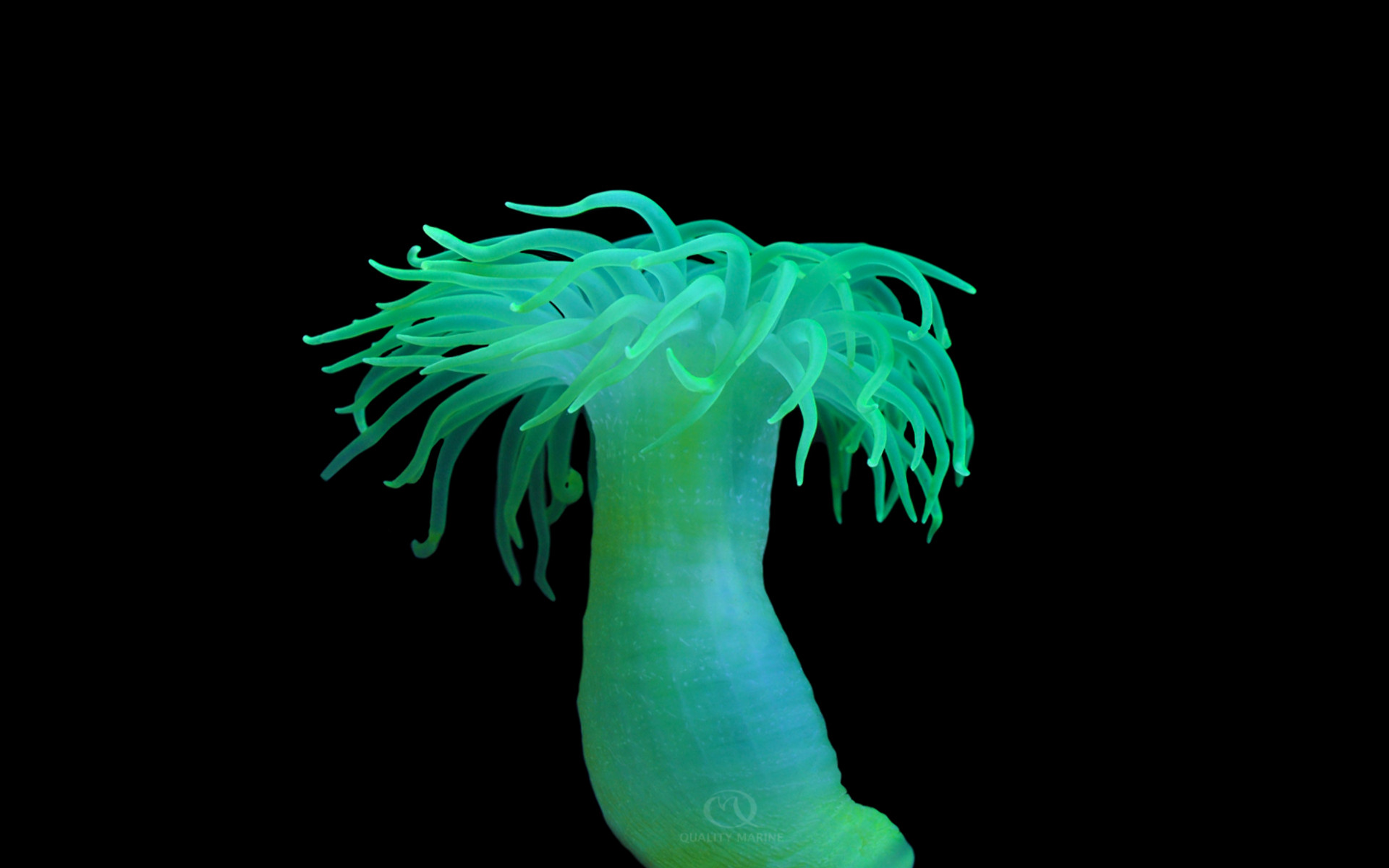The Glowing Green Japanese Neon Nem

Halcurias carlgreni has been called the “Marine Glowfish” of reeftanks by more than a few over the years, which is unfair in many ways. First, Halcurias carlgreni is not a fish, and while glowfish have been genetically modified for coloration, the Halcurias Anemonme or Japanese Neon Anemone (its real names) has had no such help. However, under actinic lighting, they do glow a glorious green all on their own.
This gorgeous and rare anemone is collected from deep water near the subtropical reefs of Japan. As such, it makes sense that this anemone does not need sunlight to survive. Not only does it not need sunlight, or an artificial alternative, it is easily burned under high intensity lighting common in most reef aquaria.
If you're looking at Halcurias calgreni, you're probably familiar with it, as it is rare and very special. For those of you who are less versed in the NPS (non photosynthetic) reef aquarium, here's an overview. With any anemone, tank size isn't necessarily important based on the animals need to wander, the size of the aquarium has an impact in that larger amounts of water can handle the waste products that the animal produces more easily. As a result, we suggest keeping these anemones in at least 40g displays. They should be dimly lit with strong, but not direct flow. Parameters should be stable, and mostly familiar to most any of you who have kept marine invertebrates in aquariums: salinity of around 1.055, pH around 8, alkalinity around 10dkh, a total lack of copper in any form, and, as always, stability being more important that actual numbers. Where this husbandry road will go off the trail for many of you is temperature. The normal tropical aquarium temperatures in the high 70s are a disaster waiting to happen for Halcurias calgreni. The animal will live in it, if acclimated slowly, short term, but will not thrive, detaching and eventually melting. We recommend a temperture in the mid 60s to low 70s at the highest, this will mean a chilled setup for most hobbyists, or a very cold aquarium room for some of you in more northern climates.
When adding anemones to a display always turn the flow to the aquarium low or off until the anemone finds an attachment point it likes. If you are adding this nem to a display that already has inverts in it that could sting the new addition, try to place the nem out of harms reach. Whenever moving anemones, try to keep them submerged at all times (there are a few, very hardy exceptions to this rule, but this isn't one of them). To do this, try to ensure that the container you are acclimating them in can be fully flushed through with display water and that the container is able to fit inside your display so you can transfer the anemone without air contact. Always watch new anemones carefully once flow is reestablished, to help ensure they don't let go and find their way to your water intake. Many hobbyists will utilize some sponge material over intakes to help make sure anemones don't get injured by doing this.
The Japanese Neon Anemone lacks the zooxanthellae of its shallow water cousins and so is dependent on food for all its nutrition. While we strongly recommend feeding all types of anemones common to the aquarium, it is vital for keeping Halcurias calgreni alive. As a smaller nem, they require smaller meals; very finely chopped seafood and mysids make great meals. They can be target fed with basters; we suggest starting with every other day, while monitoring. Anemones of all types will tell you when they are over fed, by regurgitating food that is mostly undigested, or not closing on new food. Halcurias calgreni is no exception to this. Within 24 hours of being fed, the anemone should push out a mucous laden waste product, try to remove this when it floats away from the anemone to help reduce waste load on the system. Well fed NPS things are less likely to relocate, and also less likely to consume other aquarium inhabitants. If you are keeping the Japanese Neon Anemone with fish, chose purposeful swimmers that will not accidentally swim into it.
Maybe you've been dreaming of adding one of these to your NPS display, or maybe you're new to the idea, regardless, this is one of the holy grail species for non-photosynthetic displays and an intriguing add for other dimly lit aquaria. If you're interested in getting one, have your Local Fish Store call us here at Quality Marine as soon as possible, because it may be a long time before any of these find their way back to the North America again.